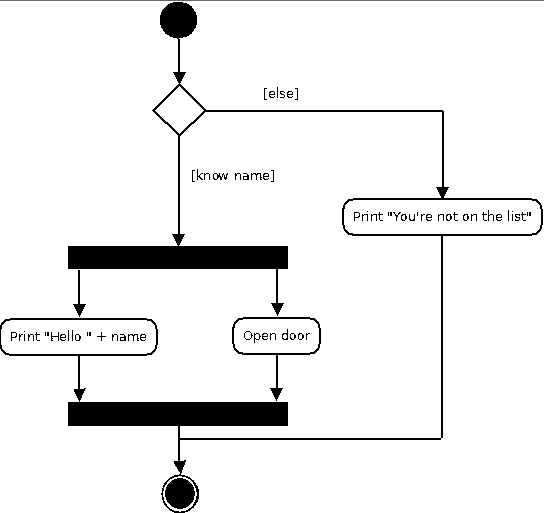UML
Dr Andy Evans
UML
- The Unified Modelling Language.
- A way of drawing code overviews so that it's understood by any programmer.
- Usually part of a software development 'process'.
- UML is an overview. Once developers have seen your UML, they'll look at your documentation for more information.
- Can be converted into raw code using some Computer Aided Software Engineering (CASE) tools.
Why?
- In industry code tends to be part of much larger projects with multiple programmers working on it.
- Therefore we need standard overviews so that...
- We can see whether an application can be made and how many people we'll need to work before we start coding.
- We can see where our code fits in when we start.
- We can see how to use other people's objects.
- If you spontaneously combust, others can pick up your work easily.
Parts of UML
- There are several types of model in the UML. Which one you use, and how you look at it, will depend on what you're trying to do.
- The secret is to use what's useful.
- Types of diagram...
- Use Cases (What are the uses someone [or thing] may want from our software).
- Class Diagrams (What are the different relationships between Classes).
- Sequence Diagrams (What order does stuff happen in).
- State/Activity Diagrams (What are Classes like over time).
Class Diagram
|
-/+/# = private/public/protected
Solid arrow is inheritance from a class/abstract class.Interfaces have dashed arrows and are written: Abstract classes are either light font or, more usually, italics. Variables at top, methods at bottom. |

|
Activity Diagram
|
Beginning and end marked by circles (end by a double circle). Diamonds for decisions. Parallel code marked by bars. |

|